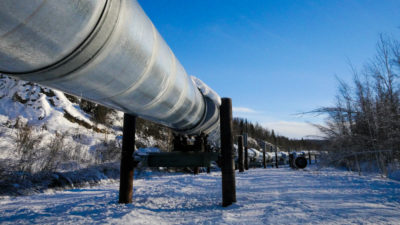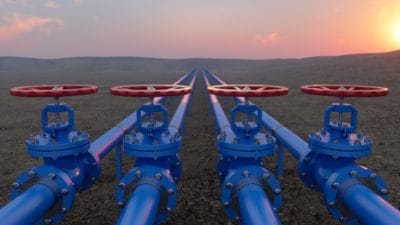Baytex Energy Corp. (TSX:BTE)(NYSE:BTE) was undoubtedly one of the Canadian oil and gas companies most adversely affected by the oil price decline. During the worst three months of the decline, from early September to mid-December 2014, Baytex had a 64% decline in its market capitalization.
This decline is not only significantly worse than its own peer group (with a 50% average decline), but was also worse than the price of WTI itself, which declined 38%. Then, to make matters even worse, as Baytex shareholders were still reeling from a 60% decline in share price in mid-December, Baytex announced a 60% reduction of its dividend.
Why was Baytex so harshly affected by the decline in oil prices? There are likely three reasons.
First, Baytex is heavily weighted towards oil (approximately 85% of production).
Second, Baytex had a fairly small hedging program in place compared to its peers, with only about 37% of production hedged in Q3 2014 before the price decline. For 2015, Baytex has 55% of its Q1 production hedged, but this drops off significantly as the year progresses, with only 9% hedged by the year end.
Third, Baytex had an extremely high debt because of its US$2.6 billion purchase of Aurora Oil & Gas, which tripled its debt from $800 million at the start of 2014 to $2.3 billion by the year end. With a debt-to-capital ratio of 45%, Baytex had the fourth-highest debt in its peer group, and companies with high debt have been shown to underperform when oil prices are weak as investors gravitate towards safer names.
Fortunately, Baytex management took a series of steps, albeit painful steps, to preserve the balance sheet and ensure sustainable operations going forward.
The recent equity issue helps preserve the balance sheet
Baytex was not subject to the best timing with regards to its $2.6 billion purchase of Aurora Oil & Gas, which gave it access to 22,000 acres in the Eagle Ford resource play. Oil prices declined shortly after, resulting in significant capital spending obligations in a time when cash flows were declining.
In March, however, Baytex moved to significantly reduce the debt it acquired from the Aurora purchase by successfully issuing 32 million shares at $17.35/share, raising a total of $550 million dollars. Before the deal, Baytex had about $666 million drawn on its $1.2 billion credit facility (part of its overall $2.3 billion in debt). After using the cash raised to pay down its debt, Baytex is estimated to only have $145 million on its credit facility, which should provide them with significant flexibility for 2015 spending and guarantees the sustainability of their dividend.
Although the equity issuance did come at a cost, in terms of shareholder dilution, the rewards outweigh the risk, and Baytex now has much more sustainable debt levels and more breathing room in the current weak pricing environment.
Baytex also moved to cut spending significantly
Not only is Baytex’s balance sheet restored, but the company also made several spending reductions to bring its spending in line with the reduced cash flow. The first cut came in the form of its massive 60% dividend reduction, which will save $137 million annually.
On top of this, Baytex also reduced their capital spending. The first reduction came in December, where Baytex announced a low-end capital spending of $575 million for 2015, which is down from $765 million in 2014. A second reduction in 2015 brought it down 12% to $500 million.
These initiatives will save $402 million in 2015, and in turn, should allow Baytex to be able to nearly fund its dividend and capital expenses with its own cash flow in 2015, a significant improvement from 2014 and 2013, when Baytex had major shortfalls.
With a solid balance sheet and reigned-in expenses, Baytex has significantly reduced its risk profile, while maintaining a large upside potential from its high sensitivity to oil price increases and quality assets with significant, low-risk production growth potential. With this in mind, now is a perfect time to buy.







